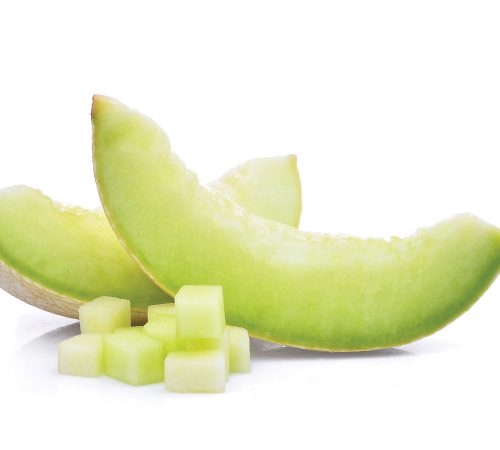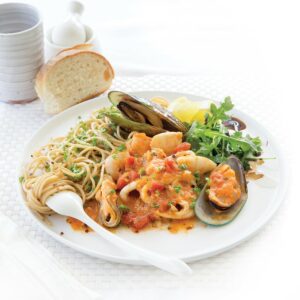
Prince melon
Also known as derishi, prince melons are one of the four most popular types of melon in New Zealand, although a little more difficult to find than water, rock and honeydew melons.
Prince melons have a smooth pale green skin and green or orange flesh. They can be eaten by themselves as refreshing juicy fruit or used in sweet or savoury salads. It can be tricky to tell if a melon is ripe or not without cutting it open. To test if a prince melon is ready, gently press the flower end (opposite to the end where the stem grows) to see if it yields slightly. Like other melons, this low-kilojoule sweet fruit is rich in vitamin C and a source of potassium.
Recipes
• Melon skewers with berry swirl yoghurt
• Melon and ginger sparkler
• Pineapple and melon with mint sugar
Blackcurrants
Probably best known as a cordial concentrate and Ribena base, fresh blackcurrants are very tart, so are often used in conjunction with other fruits in desserts, or sweetened, puréed and strained to make a cheesecake topping. But they can also be used dried in savoury dishes in the same way as other dried fruit, eg, apricots. Dried blackcurrants are also often found in hot cross buns, looking like tiny raisins. And did you know, New Zealand produces about 3 per cent of the world’s supply, making us the largest producer outside Europe?
High in vitamin C and fibre, these little beauties offer more than just their nutrients. Higher consumption of dark-coloured berries, including blackcurrants, is thought to offer a wide range of health benefits including for our heart, eyes and brain. Much of the evidence has focused on the polyphenol components in the berries, but other compounds, such as carotenoids, fibres and terpenes, may also play a role. The mechanisms for these health benefits vary from effects in the gastrointestinal tract to stimulation of anti-inflammatory responses throughout the body.
Recipes
• Blackcurrant pick-me-up
• Blackcurrant yoghurt cakes
Fresh this month
(Harvested in New Zealand gardens in January)
Vegetables
Beetroot, broccoli, buttercup squash, butternut, green cabbage, capsicum, carrot, cauliflower, celery, courgette, cucumber, eggplant, fennel, garlic, globe artichoke, lettuce, onions, peas, potato, pumpkin, radish, runner beans, shallots, silver beet, snow peas, spinach, spring onion, sweetcorn, taro tomatoes.
Fruit
Apricots, blackberries, blackcurrants, blueberries, boysenberries, cherries, figs, gooseberries, honeydew, nashi pears, nectarines, peaches, plums, prince melon, raspberries, redcurrants, rock melon, strawberries, Valencia orange, watermelon.
Herbs
Basil, chives, coriander, dill, marjoram, mint, oregano, parsley, rosemary, sage, thyme.
Article sources and references
- McDougall GJ & Stewart D. 2012. Berries and Health: A review of the evidence. Environmental and Biological Science Group, The James Hutton Institute, Dundeehttps://www.hutton.ac.uk/webfm_send/741
www.healthyfood.com










